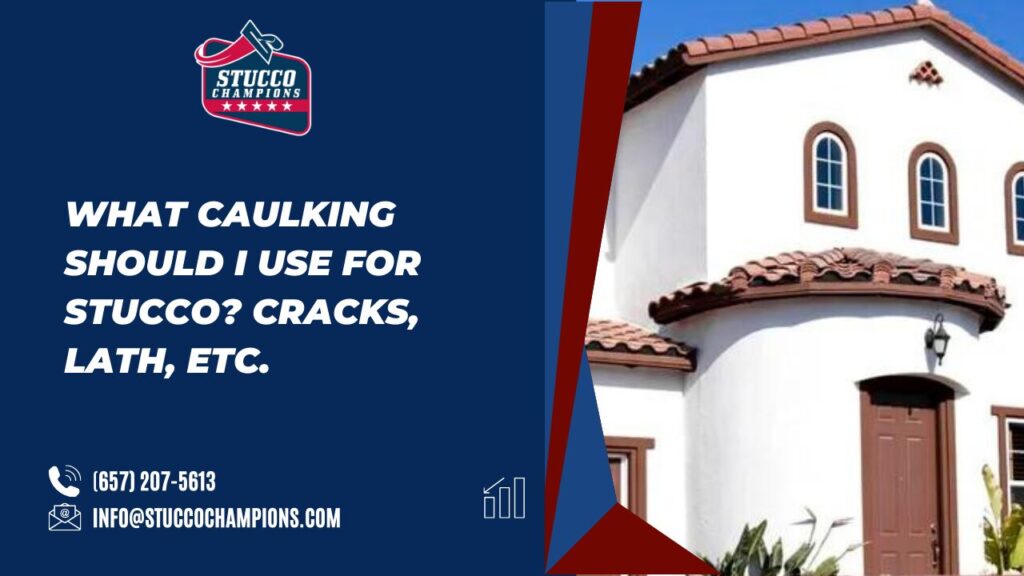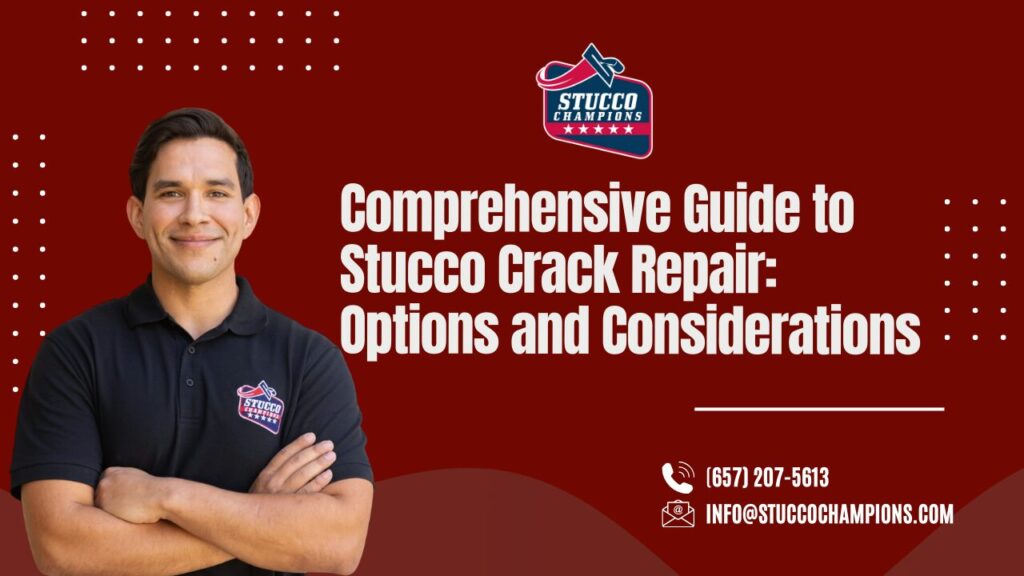As a seasoned stucco repair expert with over 20 years in the industry, I’ve navigated the vast sea of caulking options available on the market. My journey through various projects has equipped me with insights that I’m eager to share, helping you make informed choices for your stucco needs.
Understanding Caulking Choices for Stucco
The Basics: Acrylic and Polyurethane Caulking
The two pillars of stucco caulking are acrylic-based and polyurethane-based options.
Acrylic-Based Caulking:
Ideal for finish coat applications, acrylic caulking, especially those with a silicone blend, offers ease of application and seamless blending. My go-to choice has been the Alex Plus (40-year) caulking, known for its exceptional blendability and added water resistance. Its effectiveness shines in repairing hairline stucco cracks and in areas where stucco meets less weather-prone wood surfaces.
Polyurethane-Based Caulking:
When it comes to the lath portion of stucco work or sealing around windows and doors, polyurethane caulking is unparalleled. Brands like Sikaflex and Fortiflash have served me well, offering robust sealing and strong adhesion. However, its thicker consistency can pose challenges in blending with the finish coat.
Specialty Caulking: Silicone and Rubberized Options
While silicone caulking can be used, its difficulty in application and cleanup makes it a less preferred choice. Similarly, rubberized caulking has specific uses, particularly in high-moisture areas, thanks to its excellent adherence to stucco paper.
Sanded Caulking: Aesthetic Compatibility
Sanded caulking, primarily acrylic-based with fine sand additives, is designed to match the texture of stucco finishes. While it’s not a universal solution for all textures, it’s an effective option for medium to rough finishes.
Expert Recommendations and Application Tips
As a professional, I’ve learned that the right caulking not only depends on the type of repair but also on the specific characteristics of the stucco and the environmental factors involved. Here are some additional tips and insights:
- For Larger Cracks: Combining polyurethane caulking as a filler with an acrylic top layer can offer both durability and an aesthetic blend. However, ensure compatibility to avoid voiding product warranties.
- Paint Compatibility: Most modern caulks are paintable, but always verify this on the product label. Some manufacturers might recommend specific paint types based on the caulk’s base.
Purchasing and Application: A Practical Guide
Where to Buy
You can find quality caulking at major hardware stores like Home Depot and Lowes, as well as at local hardware stores and specialized stucco supply yards. While acrylic and polyurethane options are commonly available, sanded caulks might be slightly rarer.
Application Insights
- Preparation is Key: Proper surface cleaning and preparation can significantly enhance the caulking’s adherence and longevity.
- Technique Matters: Using the right tools and techniques, such as a caulking gun and smoothing tools, ensures a professional finish.
- Weather Considerations: Apply caulking in suitable weather conditions to prevent premature drying or poor adhesion.
Making the Right Choice
Choosing the correct caulking for stucco repairs is crucial for both the durability of the repair and the aesthetic integrity of the stucco. As a professional, I’ve seen the impact of using high-quality, appropriate caulking materials, and the difference it makes in the longevity and appearance of stucco work. Remember, every stucco project has its unique challenges and requirements. Don’t hesitate to consult with a professional or refer to manufacturer guidelines for specific applications.
In conclusion, whether it’s sealing hairline cracks with acrylic caulking or tackling more substantial repairs with polyurethane, the right choice in caulking can ensure a successful, enduring stucco repair.
Last week, we shared How to Expertly Patch Small Holes in an Exterior Stucco Wall providing step-by-step instructions for achieving seamless repairs. If you’re looking to restore your stucco’s appearance with ease, be sure to check out this practical guide!
—



